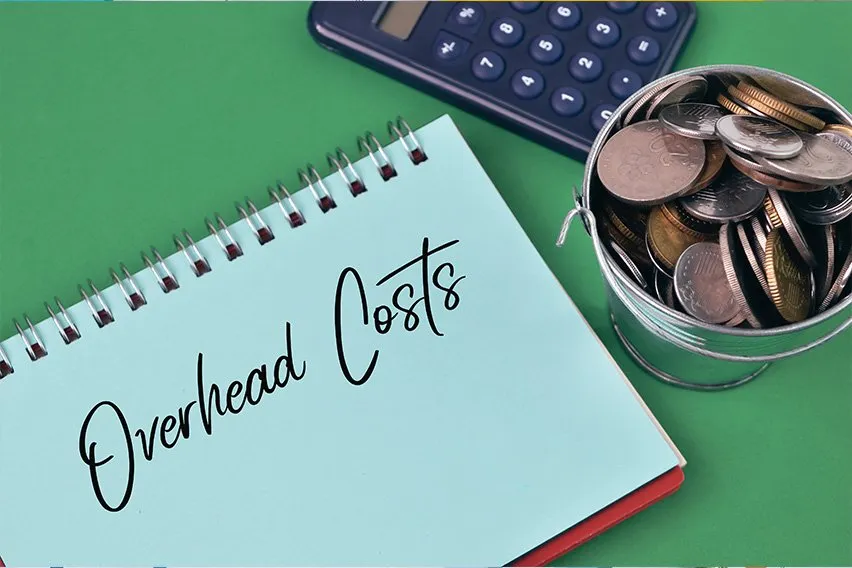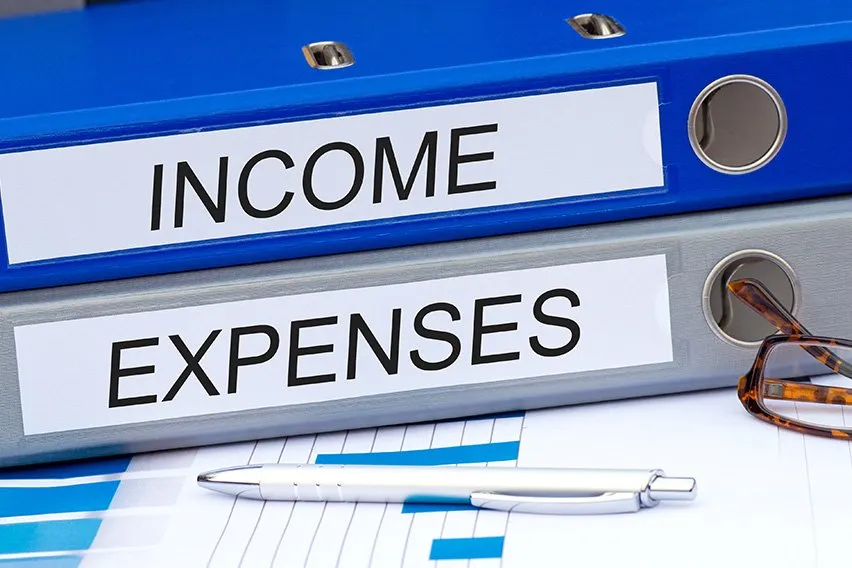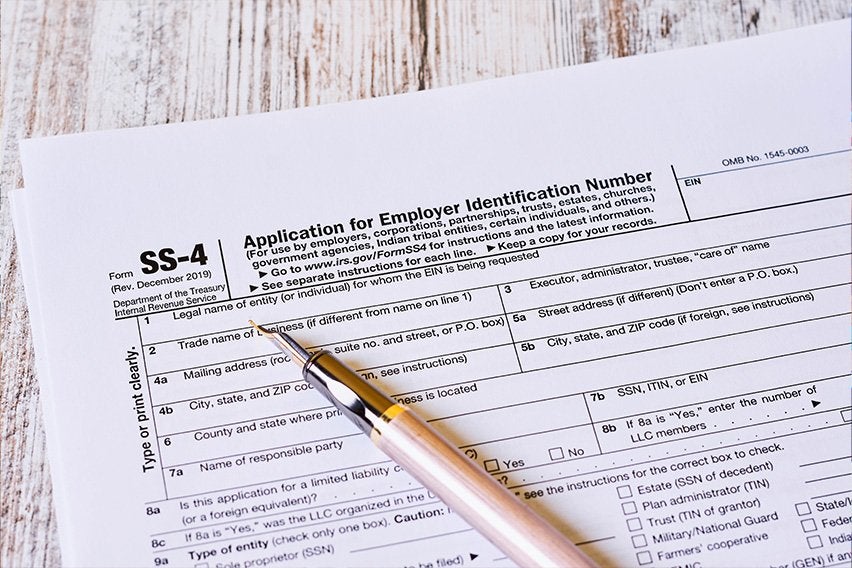How to Reduce Overhead Costs: The Small Business' Guide

In business, one adage has proven to be true time and time again: “You need to spend money to make money.” But there also comes a point when your expenses far outweigh your income—and that’s a recipe for disaster.
It’s unsustainable for your company to always be in the red. While you can’t eliminate expenses completely, there are many ways you can decrease your overhead expenses, increase your profit margins, avoid fatal cash flow problems, and keep your business afloat even through economic downturns and low sales periods.
Overhead Costs vs. Operating Expenses: What’s the Difference?
While some people think that overhead costs and operating expenses are interchangeable terms, there are actually a few key things that differentiate the two.
Operating expenses (also known as direct costs) are the expenses that are necessary to run your business or are incurred in your day-to-day operations. This includes expenses related to producing, selling, and marketing your products or services. It also includes materials, labor, equipment, manufacturing-related utilities, packaging and other costs.
Overhead costs, on the other hand, are also business-related expenses. However, this term mostly refers to ongoing costs for general business functions, or costs that you would still have to pay even if you don’t produce or sell anything for a period of time. This includes things like rent, accounting, software, insurance, salaries for management and general utilities.

Types of Overhead Costs
Fixed Overhead
Fixed overhead costs are costs that do not change regardless of profit, time or business activity. Common line items that fall under fixed costs are rent, insurance premiums, loan payments, mortgages, property taxes and government fees. Even if you aren’t selling your products and generating revenue, these costs remain the same.
Variable Overhead
Variable overhead costs are costs that do change depending on your sales volume. Variable costs increase as your sales go up and decrease as they go down. Common line items that fall under variable overhead costs are shipping, legal costs, some utilities, office supplies, maintenance of equipment, marketing and other similar expenses.
Semi-Variable Overhead
Semi-variable overhead costs are costs that you have to pay regardless, but the amount may change slightly depending on your business activity. Some common semi-variable costs include most utilities, vehicle costs (e.g., repairs, gas), hourly wages, and sales-related salaries and commissions.
How to Calculate Your Overhead Expenses
For small business owners, lower overhead costs usually means better profit margins and a boosted bottom line. But before you can reduce costs, you need to know how much your overheads are actually costing you. Here’s how:
First, take all of your indirect costs for the month. These are all costs not directly associated with producing your products or services. Then, compute your monthly sales during the same time period and divide them by your overhead.
Simply put, that’s:
(Overhead / Monthly Sales) x 100 = Overhead Percentage
Too high a percentage, and you’ll need to adjust your overhead to continue turning a profit. A low percentage is usually a good sign, although too low an overhead could mean that you’re sacrificing quality for affordability.
9 Ways to Reduce Overhead Costs
1. Invest in an Accountant
While an accountant might seem like an unnecessary expense in addition to your overhead costs, hiring a professional to handle your finances is one of the best ways to cut costs in the long run. Not only will you improve accuracy and avoid costly financial mistakes, but your accountant can also help you identify potential tax deductions that could increase your take-home amount.
2. Find a More Cost-Effective Office Space
More often than not, commercial/office spaces make up a huge part of your overhead costs. Reevaluate the size and location of your space, and think about whether or not it actually addresses your business’ biggest needs.
- Perhaps you could declutter your office and find a smaller space to rent
- Maybe you can switch locations without sacrificing revenue/productivity
- Possibly some of your employees could work from home instead
3. Rent Instead of Buy
Buying equipment for your company is a huge investment. If you’d rather not spare the cash, you can rent or lease it instead. This allows you to make use of the equipment without worrying about upfront payments, maintenance or repairs.
4. Trim Your Team
Employee wages are another major contributing factor to your overall overhead costs. Downsizing is always an option, especially if you’ve found that you can reduce your staff count without impacting morale or productivity. But the best way to trim the cost of employees is by making smarter hiring decisions in the first place—find employees who have a variety of skills and backgrounds, or invest in training and development so that you can fill gaps internally.
5. Go Green
Utilities can really add up if you’re not careful. Going for more eco-friendly alternatives like LED bulbs, “green” outlets and energy-saving power strips may have a bigger upfront cost, but they will result in lower utilities down the line. Also consider going paperless to save on paper, printing and electricity.
6. Outsource
You don’t need to do everything in-house. Outsourcing specific tasks and responsibilities can help you fill staff gaps without having to pay full-time wages—it also means you save on the cost of office supplies and other overhead expenses. Plus, if you need to scale back, you can simply stop using third-party services. Just be cautious about choosing suppliers and only outsource tasks that are well-suited to freelancing, like accounting or marketing.

7. Build on Your Brand Ambassadors
Marketing is a business necessity, especially in highly competitive industries, but it can eat up a huge part of your budget. Save on advertising by leveraging your most powerful marketing tool: your loyal customers. Encourage customers to become brand ambassadors by offering discounts, incentives and bonuses for referrals. Tons of people would be more than happy to give you free promotion for something in return, especially if they are already big fans of your brand.
8. Review Your Contracts
If you’ve been in business for a while, evaluating your contracts and renegotiating their terms can be a great way to save money. Your company has likely changed/grown, and the same is probably true of your relationship with your suppliers/third-party providers. Cancel any contracts that no longer serve your needs, and renegotiate the necessary ones to get more favorable deals.
9. Shop for the Best Business Credit Card
Business owners should always have a credit card set aside for business expenses—don’t use your own personal card! Shop around for a card that’s the right fit for your business, especially in terms of credit limit, interest rates and fees. There are cards specifically designed for business owners that offer great rewards like cash back, discounts, and maybe even points that you can put towards business-related travel.
Conclusion
Reducing your overhead expense may seem like a daunting task, but you’d be surprised how much cutting small things here and there can add up over the long term. It doesn’t need to include drastic rebudgeting or downsizing—just reevaluate your current financial situation and see where you can cut costs in little ways!
RELATED ARTICLES


 How to Keep Track of Expenses and Profits?
How to Keep Track of Expenses and Profits? EIN (Employer Identification Number): Who Needs It & How To Apply?
EIN (Employer Identification Number): Who Needs It & How To Apply? Crowdfunding for Business: 17 Best Sites To Get Capital
Crowdfunding for Business: 17 Best Sites To Get Capital How Can Your Small Business Go Green? Sustainability Tips for Startups
How Can Your Small Business Go Green? Sustainability Tips for Startups 12 Legal Requirements for Starting a Small Business
12 Legal Requirements for Starting a Small Business 10 Best Home-Based Business Opportunities in 2025
10 Best Home-Based Business Opportunities in 2025